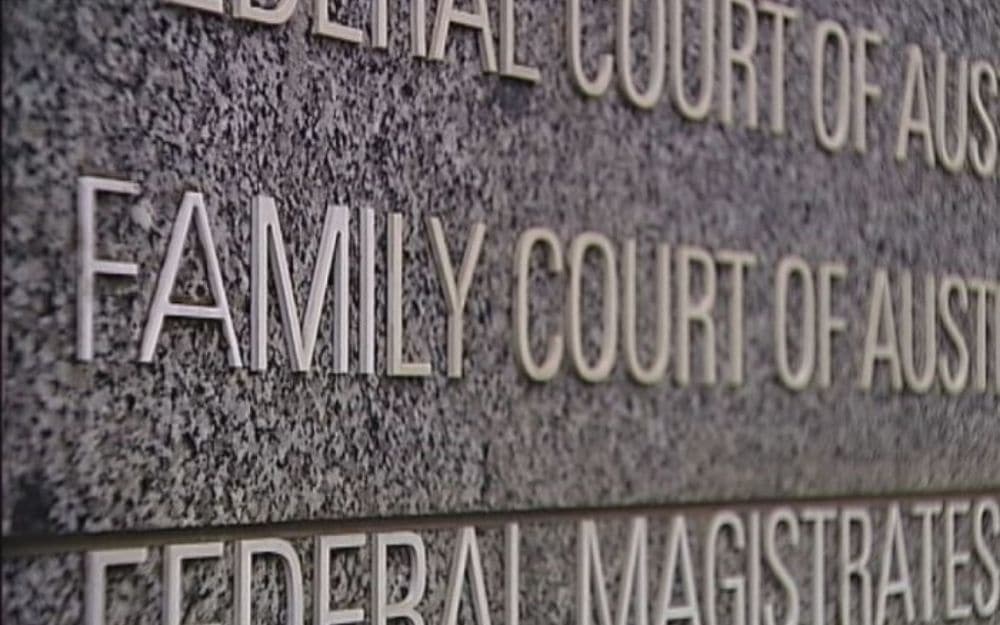
In this video, OMB Solicitor Calum Ball shares insight about purchasing into a retirement village and the required process to get in.

In this video, OMB Solicitor Calum Ball shares insight about purchasing into a retirement village and the required process to get in.

In this video, OMB Solicitors Partner and Accredited Property Law Specialist Simon Bennett shares advice about getting insurance when buying a new property.

In this video, OMB Solicitors Partner and Accredited Property Law Specialist Simon Bennett talks about buying a residential unit in an off-the-plan purchase.

In this video, Wills & Estates Solicitor Harley Wilkinson talks about the importance and benefits of having a Will in place.

Sometimes it is confusing to understand the difference between repairs, maintenance, improvements and disposal of common property – listen to Tom Robinson as he unpacks the difference.

In this video, OMB Solicitors Partner Abbi Golightly discusses the contravention of parenting orders.

Did you know that there is an alternative to litigation when it comes to resolving your property settlement matters? In this video, OMB Solicitors Partner Abbi Golightly talks about arbitration.

In this video, OMB Solicitors Partner Abbi Golightly shares some of the key changes from the Federal Circuit Court merger with the Family Court of Australia, particularly in implementing mandatory pre-action procedures.

In this video, OMB Solicitors Partner Tom Robinson discusses what a buy-out in body corporate actually means.

In this video, OMB Solicitors Senior Associate Elisha Quigg tells you five important things you need to know about living in community and strata.

In this video, OMB Solicitors Partner Cameron Marshall talks about how we can help you in your litigation matters from an early stage in the proceedings, particularly building a claim you may have because of defective work.

In a year dominated by COVID-19, vaccines and lockdowns, do not be surprised if you missed an equally significant headline from New South Wales’ highest court – the appointment of a building manager in a strata scheme!
When the Strata Schemes Management Act 1996 (NSW) was amended by the Strata Schemes Management Act 2002 (NSW), the legislation restricted a building manager from continuously extending an agreement for more than 10 years after the Amendment Act, including any term or option to renew the agreement.
Previously, a building manager could be engaged by an owners corporation indefinitely.
However, it appears that the recent appeal decision of Australia City Properties Management Pty Ltd v The Owners – Strata Plan No 65111 has, for the time being at least, affirmed the legislature’s intention when it introduced a 10 year limit on the appointment of a building manager in a strata scheme.
In Australia City Properties Management Pty Ltd v The Owners – Strata Plan No 65111, there was a dispute between the building manager and the owners corporation regarding the term of the management agreement (“Agreement”), which was entered into on 30 March 2001 – before the Amendment Act.
While the Agreement, dated March 2001, was for an initial period of ten years, with an option to renew for three (3) additional terms of five (5) years, the building manager and owners corporation entered into two (2) deeds of variation (“Deeds”) in March 2010 and March 2015 – after the Amendment Act took effect.
The Deeds had the effect of extending the term of the Agreement beyond the 10-year limit, such that it had an expiration date of March 2041.
In August 2019, the owners corporation terminated the Agreement, on the basis that the building manager had been “grossly negligent” in performing its caretaking duties. The manager argued that the Agreement was not validly terminated and as such, was entitled to damages in the amount of $2 million. These damages were calculated on the basis the Agreement was for a (total) term of 40 years.
The issue on appeal was whether the Deeds in 2010 and 2015 were considered “caretaker agreements” under the Amendment Act, such that they were limited to a term of 10 years.
In determining whether the Deeds were limited to a term of 10 years, the Supreme Court considered their “text, context and purpose”.
Given the purpose of the Deeds was to grant a further option under the original Caretaking Agreement, the Court held that the Deeds were, in fact, separate “caretaker agreements”, as defined by the legislation.
The effect of this is that the Deeds were “read down” to expire on 29 April 2025, rather than March 2041, such that the Agreement was limited to a term of 10 years.
As a result, any award of damages to the service contractor for unlawful termination of the Agreement would be calculated up to April 2025.
While Australia City Properties Management may ultimately reach the High Court of Australia, for the time being at least, the decision by Chief Justice Bathurst has provided guidance on the term of a management agreement in a strata scheme.
While the term of appointment for building managers in NSW strata schemes is (currently) capped at a maximum term of 10 years, the same cannot be said of schemes across the border.
In Queensland, bodies corporate which are regulated by the Body Corporate and Community Management (Accommodation Module) Regulation 2020 (“the Accommodation Module”) may appoint a service contractor for a maximum term of 25 years, including any terms of extension.
And if you thought snap lockdowns were long…
Bodies corporate regulated under the Body Corporate and Community Management (Standard Module) Regulation 2020 are currently restricted to a term of ten (10) years.
Given the significance of the decision in Australia City Properties Management, it will be interesting to see if Queensland follows the lead of New South Wales and implements a limit on the term of a caretaking agreement for schemes regulated under the Accommodation Module.
OMB Solicitors’ specialist strata practitioners have recently seen a number of building managers attempt to circumvent the 10-year limit by requesting owners corporations extend their management agreement beyond this term.
Owners corporations should consult with OMB Solicitors when reviewing (or varying) the terms of its management agreement, to ensure it complies with the legislation.

In this video, OMB Solicitors Partner Juliette Nairn delves into the requirement of bodies corporate to obtain an expert report for building defects.

In this video, OMB Solicitor Dakota Hallett discusses what the Family Court takes into consideration in a property settlement following separation.

The sudden collapse of a Miami apartment block on June 24, killing more than 98 people, made headlines around the world and focused attention on the horrific consequences of unaddressed building defects.
Initial findings on the collapse of the Champlain Towers South in the Florida suburb of Surfside suggest long-term degradation of reinforced concrete supports in the underground parking garage caused by water penetration from a leaking pool was a major factor.
In Australia, the increasing popularity of living close to work, retail and transport facilities means ever more high-rise apartments in our major cities and regional centres. As a result, developers rapidly construct new blocks to meet the demand, not always with the rigour required of modern construction and building codes.
High profile local cases of building defects such as the slanting of Sydney’s Opal Tower and the fire at Melbourne’s Lacrosse building have highlighted some of the legal issues involved for owners in such properties, which we’ll look at in this post.
A building defect can be caused in a number of ways, from faulty workmanship to poor design, use of defective materials, or a failure by a builder to follow standards set out in the National Construction Code.
For a fault caused by any of these means to be considered a defect, it must carry the risk of damage or destruction to the building or make it unable to be used for its intended purpose. This is considered a major defect.
A minor defect, by contrast, is any defect that is not a major defect and will usually be a cosmetic fault.
Common building defects include damage caused by inadequate waterproofing or cracks which appear in walls, ceilings and floors due to issues with a building’s structure.
In Queensland, a building defect is a faulty or unsatisfactory work under the terms of the Queensland Building and Construction Commission Act (‘the Act’).
Under the Act, statutory warranties exist in relation to new buildings, enforced by the QBCC. Within these periods, the builder is responsible for remedying any defects.
Defect liability periods are the time limits in Queensland within which an owner or body corporate can make a claim against the builder to remedy defects.
Structural, or major, defects such as water leaks, major cracks and structural failure have a defect liability period of six years + six months from the ‘practical completion’ date of the building in Queensland.
Non-structural defects such as frayed carpet, or paint and tiling defects, for example, have a 12-month defect liability period.
Once a defect is detected and known about, it must be reported to the builder within 12 months through lodgment of a defective building work complaint with the Queensland Building & Construction Commission.
Defects found on both individual and common property in strata properties are covered by the statutory warranty. The body corporate may bring an action to have the defect remedied on behalf of a lot owner.
It’s important for a body corporate to act quickly once a building defect is known about as after the expiration of the warranty, responsibility for rectification will generally fall on the body.
It should be noted that a body corporate is not responsible for building defects within lots unless those defects relate to the structure of a building and the building was created in a building format plan.
Strata insurance is taken out by a body corporate to cover public liability, damage to common property and common area contents, theft, recovery after a catastrophe, and legal liability for office bearers.
Many strata insurance policies include excluding any loss or damage arising from an existing defect in the building’s construction and/or design.
Such exclusion may leave a body corporate with limited or no cover in relation to building defects.
Bodies corporate should also check a similar exclusion is not part of the public liability coverage of the policy so that they are covered in the case of personal injury that might result from a building defect.
A body corporate can reduce its exposure by establishing the practical completion date of the building and being aware of the statutory warranty period; commissioning a defect report well before the expiry of the warranty; actioning any defects identified in the report before the liability defection period expires.
OMB Solicitors’ specialist practitioners in this area of the law mean we regularly advise bodies corporate on the complexities of strata insurance policies when building defects arise in buildings.
We will help advise on the fine print of the policy. We will also provide a body corporate with the right advice to enforce rectification of defects through the QBCC, or a separate contractual claim against a developer or builder in relation to defects.
Call us Gold coast Solicitors today if advice is required on any of the issues raised in this article.

In this video, OMB Solicitors Partner, Juliette Nairn discusses the tips and traps of the first annual general meeting of a body corporate.

OMB Family Law Partner, Abbi Golightly, is an Accredited Specialist in Family Law and has been since 2009.
So, what does that really mean for you, our clients?
The Queensland Law Society developed a process of assessment and accreditation in the main areas of practice in Queensland, including Family Law. The QLS operate the Specialist Accreditation Scheme as a method by which to identify those members of the Queensland Law Society who have demonstrated a high level of expertise in a particular area of law.
In order to achieve Accredited Specialist status, there are a number of requirements that have to be satisfied to the highest level. First and foremost, the lawyer has to have been practising almost exclusively within the relevant area of law for at least five years. Thereafter they must pass the stringent assessment program offered by the QLS.
This assessment process involves interviews, exams and submitting examples of work and in order to pass, each discipline must be passed.
Once achieved, Accredited Specialist status is maintained by undertaking a higher level of professional development every year in order to maintain a level of knowledge that is expected of a specialist.
You can identify an Accredited Specialist by the QLS logo that can only be used with the approval of the QLS.
Here at OMB Solicitors, you can see that logo on our website and in our email signatures.
Why does having an Accredit Specialist matter in family law? Family Law is one of the most complex areas of law. It involves traversing many legal disciplines but also involves a skill set of empathy, understanding, compassion, negotiation skills , family law mediation and arbitration.
When you see the Accredited Specialist symbol, you can be confident that your Family lawyers has a skill set that will be applied to help you achieve the best outcome possible in the circumstances. It also means that that skill set is passed on to other members of our family law team, who will be trained by the best in the business also.

On 1 September 2021, the family law courts Federal Circuit and Family Court of Australia will commence operations.
The new court is being touted as an opportunity to change the conversation about family law disputes in Australia. That conversation is focused with great emphasis on dispute resolution (where it is safe to do so) before commencing proceedings and if proceedings are required, ensuring parties are aware of the ramifications for them and their families.
For those families that require judicial intervention, the process is intended to be transparent and more efficient with resolution without undue delay. It is also designed to have a focus on the safe resolution of disputes for vulnerable families, with the increasing rate of family violence in our community prompting that focus.
There will be, for the first time in over 20 years, one single entry point, a single set of rules and forms and case management processes designed to provide a streamlined approach to family law litigation. Whether or not that eventuates, is yet to be seen.
Chief Justice of the Family Court of Australia and the Federal Circuit Court of Australia, the Hon Will Alstergren said that for decades, people in the legal profession, and the wider community, have been calling for change and commenting that the “system” wasn’t working. “The Courts have responded to these calls for change. The Federal Circuit and Family Court of Australia will provide a completely new family law system which focuses on risk, responsiveness, and resolution. There will also be a significant focus on compliance with court orders, demonstrated by the establishment of a new National Compliance List which will also commence on 1 September 2021.”
In response to the increasingly unacceptable delays, the Chief Justice has said that we need to do things differently and the system will identify risk and safety at the very beginning of every case as a priority, where parties will be given ongoing opportunities for dispute resolution where it is safe to so, and if cases cannot be resolved, it will be listed for a trial before a judge much earlier than previously experienced.
The use of Court Registrars and Court-appointed Family Consultants will be integral to the new system to undertake the triage and case management of all matters filed. As far as possible, duty lists will be conducted by Registrars and interim hearings will be conducted by Senior Registrars which is designed to alleviate the front end case management burden on Judges and ensure that they are able to hear and determine trials and deliver judgments in the matters that require judicial attention as quickly and efficiently as possible.
The newly proposed system will see the following time frame for Court events:
To facilitate these changes the Commonwealth Government has provided more than $100 million in new funding. The Courts have now been able to undertake an intensive recruitment drive to secure the services of highly skilled and energised family law practitioners to assist the Courts’ existing hardworking and diligent Registrars and staff. The number of Judges has also been increased to the highest-ever number of Division 2 (or Federal Circuit Court) judges and the highest number of Division 1 (or Family Court) judges since 2007.
Here at OMB solicitors, we are across all of the proposed changes to processes and procedures and will be ready, come 1 September 2021 to embrace the new way of Family Law litigation.
If you have any concerns or queries about how your matter will be managed post 1 September 2021 or discuss any family law matter, contact our Gold Coast Family lawyers on 55550000.

In this video, OMB Solicitors Partner, Tom Robinson talks about the material change of use applications in bodies corporate.

In this video, OMB Solicitors Partner, Juliette Nairn discusses what you need to know about building defects in Strata Scheme.